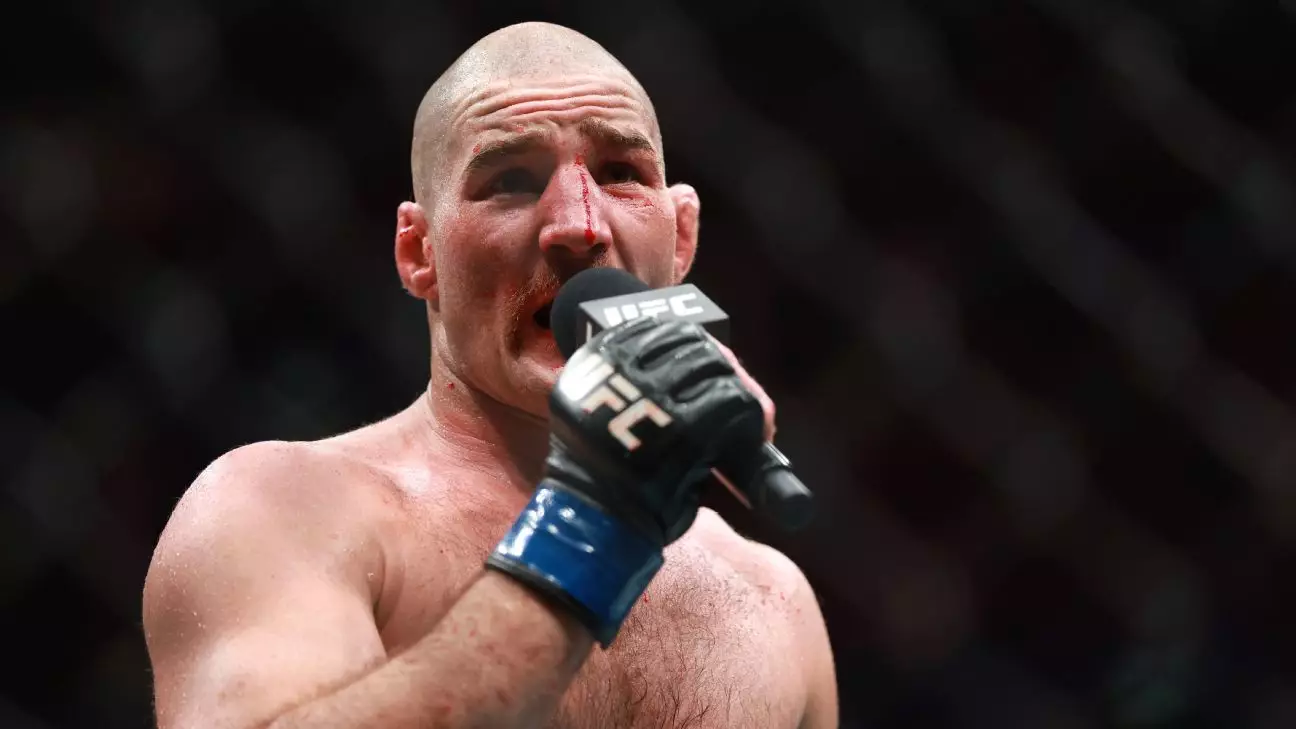The world of mixed martial arts is often defined by raw talent, unwavering commitment, and the extraordinary pressure that fighters endure. In recent events unfolding within the UFC, former middleweight champion Sean Strickland has exemplified the intense scrutiny athletes face, especially after a disappointing performance. Following his lackluster return against Dricus Du Plessis at UFC 312, Strickland expressed substantial dissatisfaction with the criticisms from his long-time coach, Eric Nicksick. This situation serves not only as a spotlight on the pressures athletes face but also a revealing examination of the dynamics between fighters and their coaches.
At the heart of this controversy is the intricate and often fraught relationship between coaches and fighters. Nicksick’s remarks regarding Strickland’s performance—characterizing it as “underwhelming” and even likening his demeanor to that of someone “sleepwalking”—highlight the expectations that coaches have for their fighters. When Nicksick expressed doubt about Strickland’s motivations, stating that he aimed to coach world champions and wanted clarity on Strickland’s goals, it resonated with the ongoing narrative of what constitutes a true fighter’s spirit. Strickland’s response, filled with emotion and reflection, represents a counter-narrative emphasizing the struggles fighters face behind closed doors.
Strickland’s assertion that he “probably won’t” have Nicksick in his corner again exposes the vulnerability present within the sport—a fissure created when expectations and personal relationships collide. While Nicksick’s candidness may stem from a place of duty and a desire for accountability, it inadvertently risks fracturing a bond that has been built over years of training.
What makes the discourse surrounding Strickland’s performance poignant is the personal struggles he bravely disclosed during his social media response. He revealed the physical toll he endured during his training camp, including a broken arm and a staph infection. Such injuries are not mere inconveniences; they impose significant limitations that can deeply affect a fighter’s ability to train and compete effectively. Strickland’s candid sharing sheds light on the larger conversation around athletes’ mental and physical health, highlighting the unseen battles they fight even before stepping into the Octagon.
Moreover, Strickland’s admission regarding the impact of a broken nose during the fight provides insight into the mental resilience of fighters. It is easy for spectators to speculate on performance based solely on results, yet few understand the physical ramifications of sustained injuries in high-stakes combat sports. Strickland’s insistence that he “didn’t quit” despite numerous challenges emphasizes a core value in martial arts: mental fortitude against adversity.
Nicksick’s comments provoke a fundamental question prevalent in the sports community—what motivates an athlete? Strickland’s plight brings to surface differing perspectives between coaches and fighters about ambition and commitment. While Nicksick contends that he aspires to coach champions and demands a certain level of motivation from his fighters, there is an implicit acknowledgment that every athlete’s journey is unique. The notion of fighting simply for a paycheck does not sit well with many in the sport, yet it can be a genuine reality for some combatants.
Strickland’s recognition of systemic issues in the sport reflects a broader dialogue about expectations in competitions, thereby encouraging introspection for both fighters and coaches. This dichotomy complicates the notion of success in combat sports—what does it mean to be successful when the outcomes are often dictated by a mix of preparation, injuries, and external pressures?
For Strickland, this episode can serve as a learning opportunity as he navigates the tumultuous waters of competitive fighting. While the path forward may be rocky, this juncture offers a chance for reflection, growth, and improved communication with his team. For coaches like Nicksick, understanding the athlete’s perspective while balancing expectations may yield better results in the long run.
Ultimately, the intersection of personal struggles and collective expectations within combat sports beckons for ongoing dialogues surrounding the challenges athletes face. Each setback is not merely a failure but an invitation to reassess motivations, strategies, and the essential relationships that shape a competitor’s journey. As Strickland aims to rebound from his setback, it is clear that the road ahead involves not just physical readiness but also emotional resilience and clarity of purpose.

